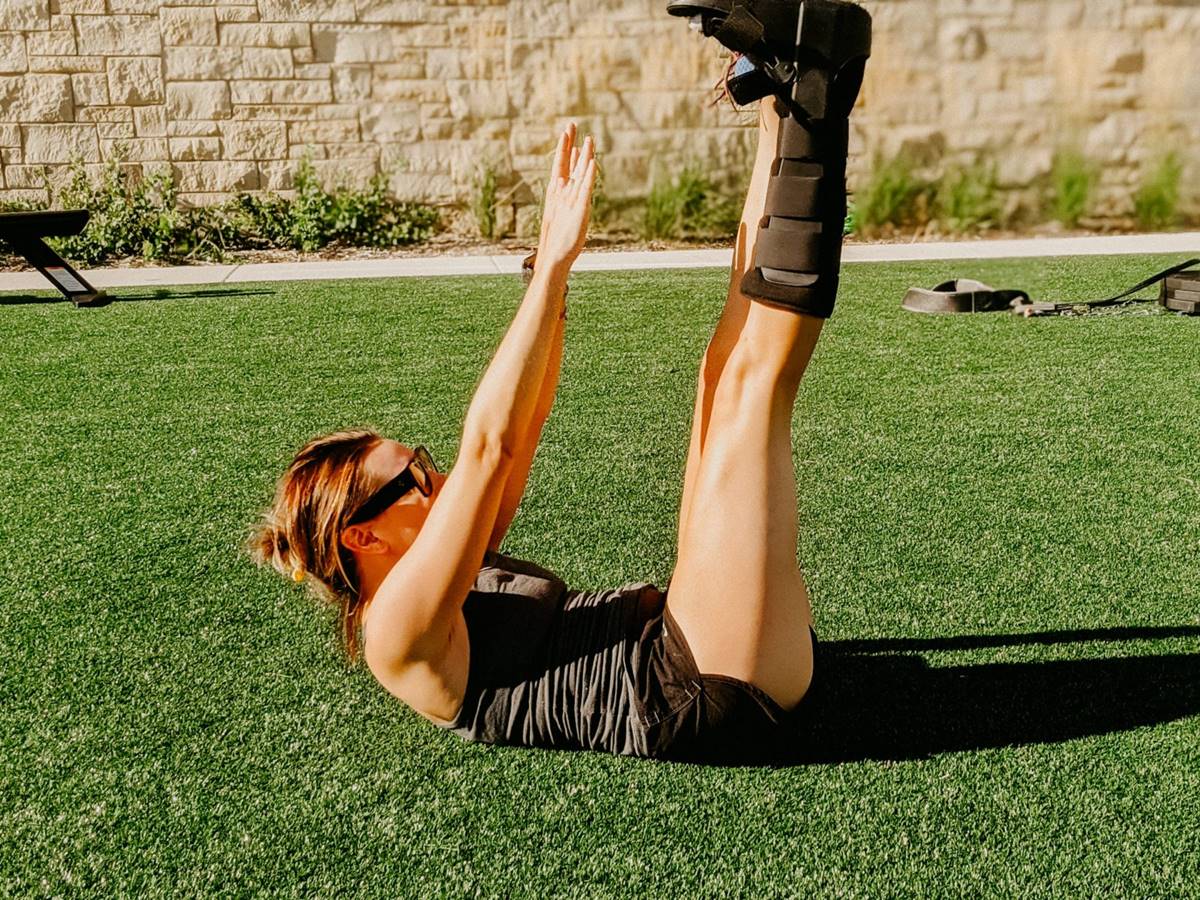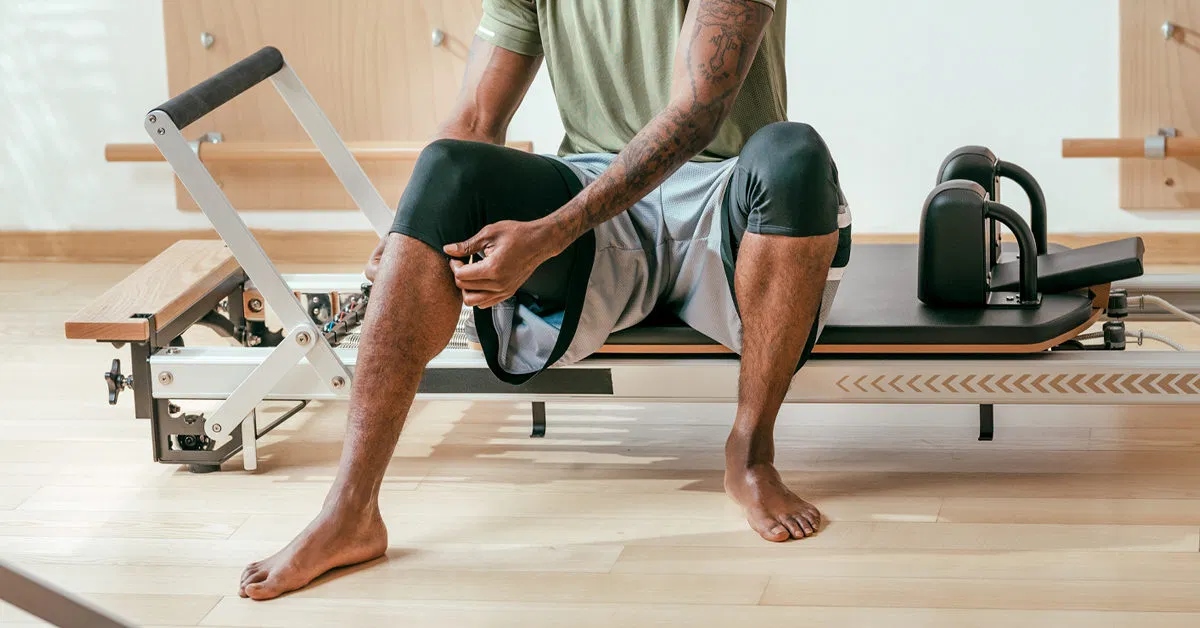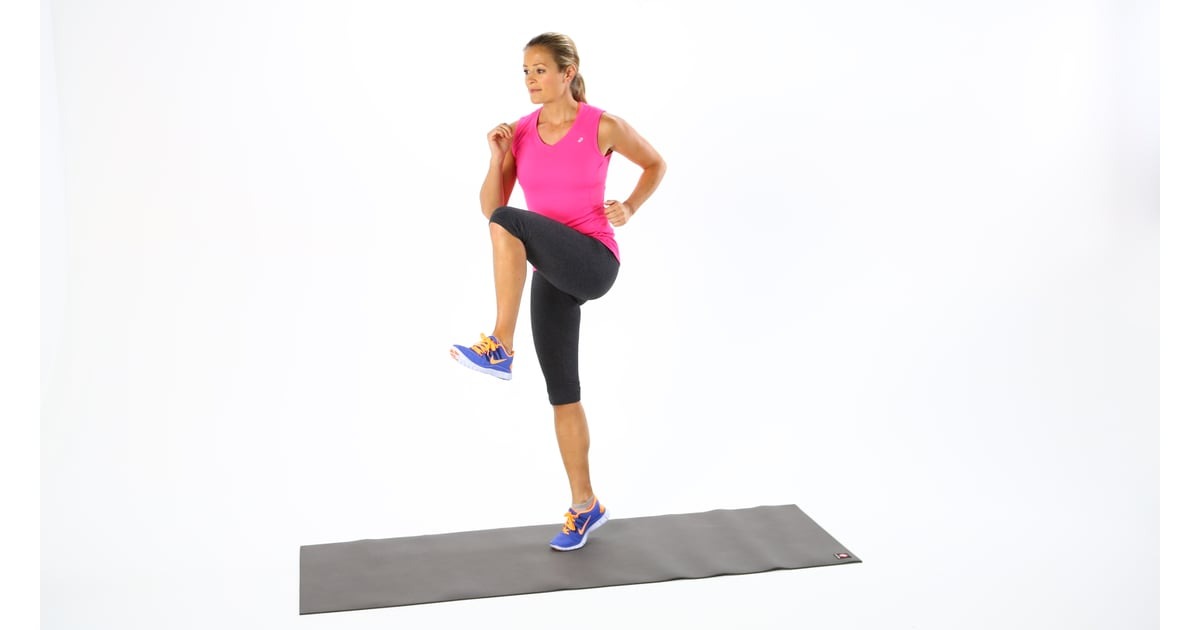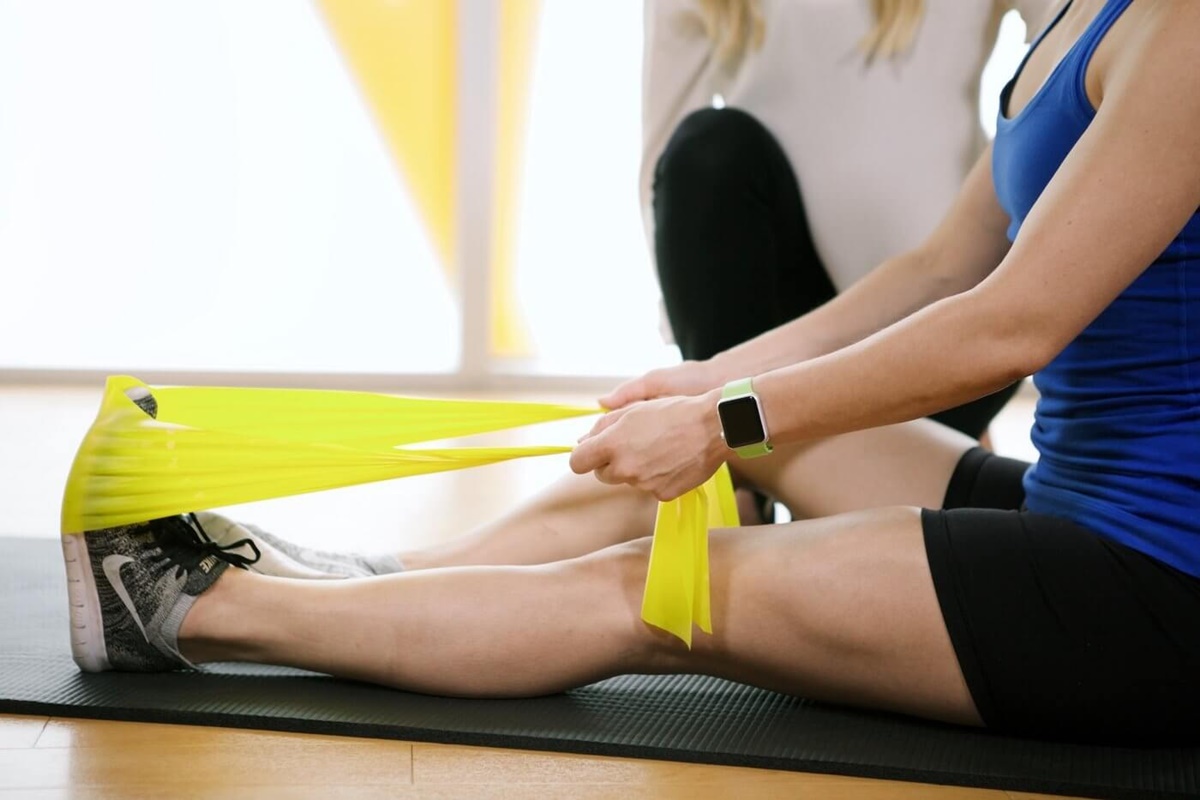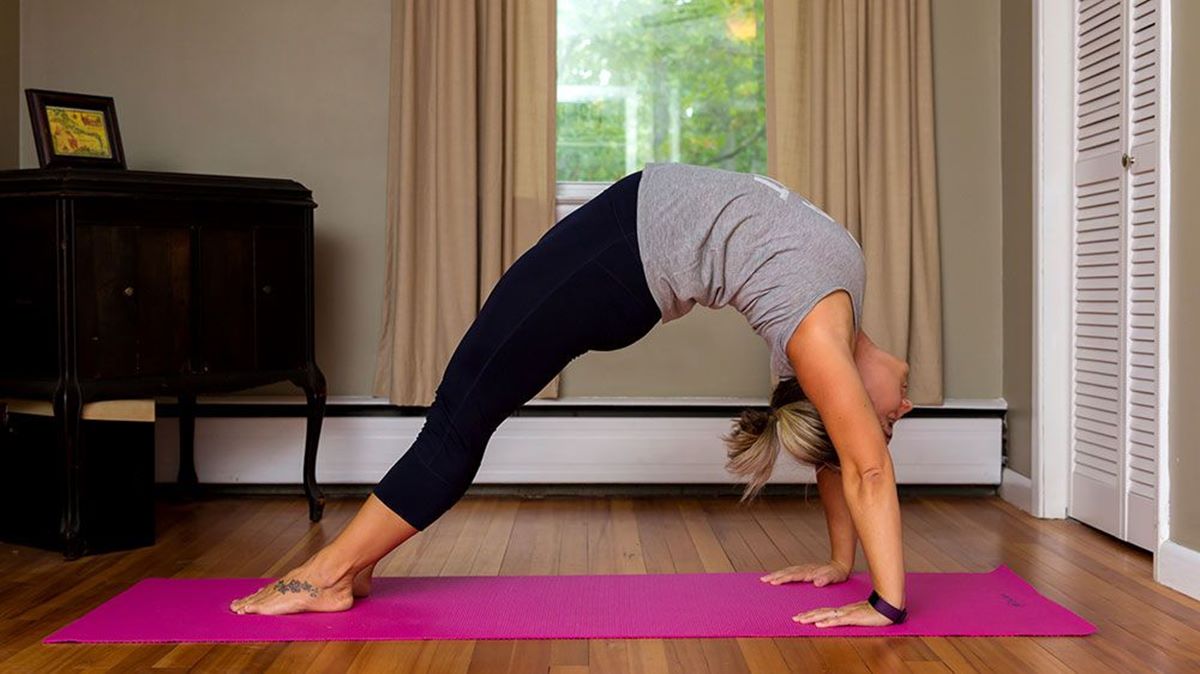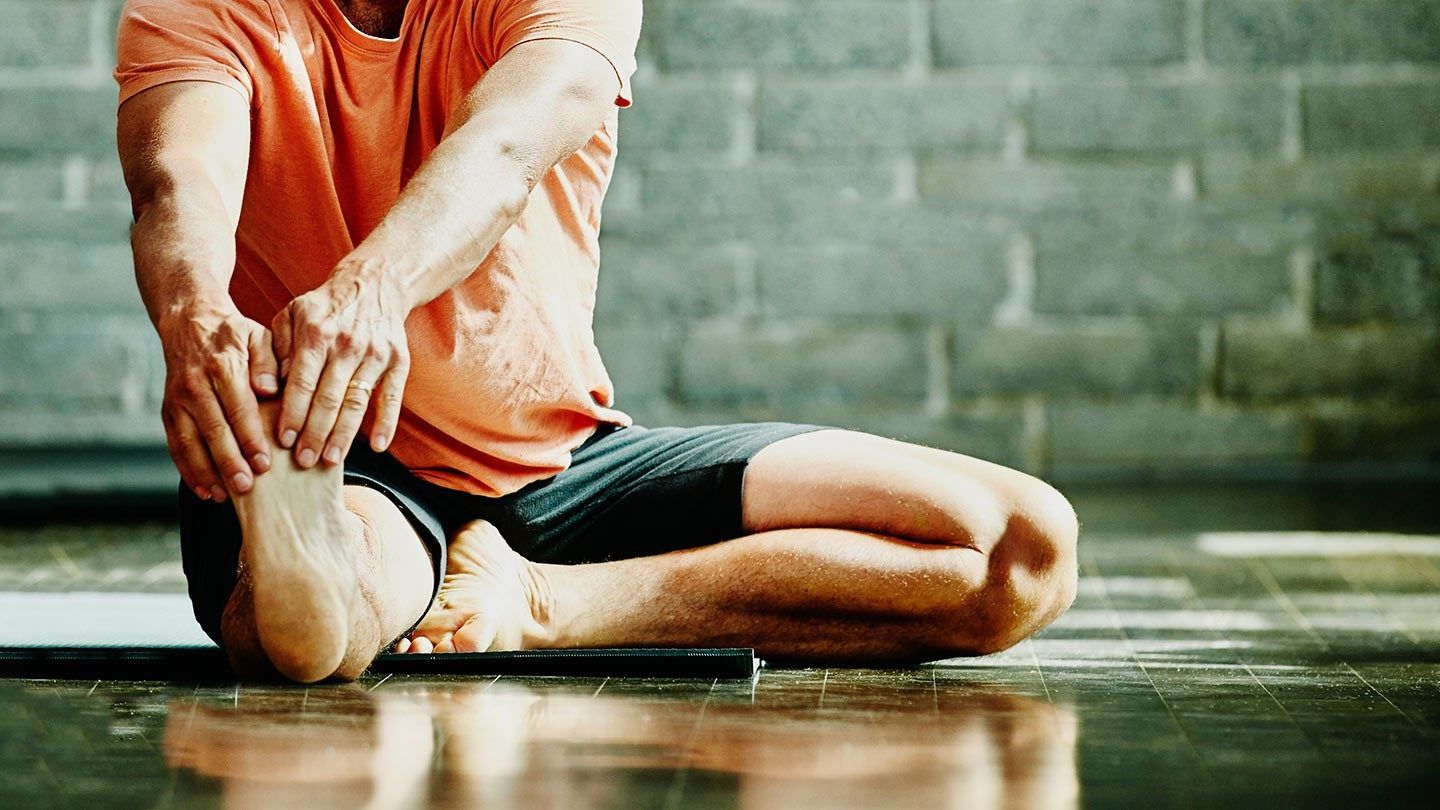

Featured
What Is The Best Exercise For Knee Pain
Published: September 27, 2023
Find out the featured exercise for knee pain relief. Discover the best exercise to alleviate knee pain and improve mobility.
Introduction
Knee pain can be debilitating and greatly impact one’s quality of life. Whether it’s caused by an injury, arthritis, or other underlying conditions, finding relief from knee pain is a top priority for many individuals. While there are various treatment options available, exercise is often considered one of the best methods for managing and alleviating knee pain.
Regular exercise not only helps to strengthen the muscles around the knee joint, but it also improves flexibility, increases blood flow, and promotes overall joint health. However, it’s important to note that not all exercises are suitable for individuals with knee pain. Understanding the underlying causes of knee pain and selecting the right exercises are crucial for achieving optimal results.
In this article, we will delve into the causes of knee pain, discuss the importance of exercise for knee pain relief, and provide a comprehensive list of the best exercises specifically targeted at addressing knee pain.
Whether you’re an athlete recovering from a sports-related knee injury or an older adult dealing with osteoarthritis, this article will provide you with valuable insights and guidance to help you find the best exercise for your knee pain.
Understanding Knee Pain
Knee pain is a common complaint that affects people of all ages and lifestyles. It can range from mild discomfort to severe pain, limiting mobility and daily activities. Before delving into the best exercises for knee pain relief, it’s essential to understand the underlying causes and mechanisms of knee pain.
The knee joint is a complex structure consisting of bones, ligaments, tendons, and cartilage, all working together to provide stability and mobility. When any of these components are damaged or affected, it can lead to knee pain.
Some common causes of knee pain include:
- Injuries: Traumatic injuries, such as ligament tears, meniscus tears, or fractures, can cause acute knee pain. Sports-related injuries, accidents, or falls are common culprits.
- Arthritis: Osteoarthritis, rheumatoid arthritis, and gout are types of arthritis that can affect the knee joint. These conditions cause inflammation, joint damage, and chronic pain.
- Overuse: Repetitive movements and overuse of the knee joint, especially in high-impact activities like running, can lead to knee pain. Conditions like patellar tendinitis and iliotibial band syndrome often result from overuse.
- Obesity: Excess body weight puts additional stress on the knee joint, leading to pain and increased risk of conditions like osteoarthritis.
- Age-related wear and tear: As we age, the cartilage in our joints naturally wears down, leading to conditions like osteoarthritis and general knee pain.
Understanding the root cause of your knee pain is crucial for effectively managing it. It’s recommended to consult with a healthcare professional who can diagnose the specific cause of your knee pain and provide appropriate treatment recommendations.
Now that we have a better understanding of knee pain and its potential causes, let’s explore the importance of exercise in relieving knee pain.
Common Causes of Knee Pain
Knee pain can be caused by a variety of factors, ranging from acute injuries to chronic conditions. Understanding the common causes of knee pain can help you identify potential triggers and take the necessary steps to manage and alleviate your discomfort.
1. Injuries: Acute injuries, such as ligament tears (like the anterior cruciate ligament or ACL), meniscus tears, or fractures, are common causes of knee pain. These injuries can occur during sports activities, accidents, or falls. The sudden trauma to the knee can lead to swelling, severe pain, and limited mobility.
2. Arthritis: Osteoarthritis and rheumatoid arthritis are two common types of arthritis that can affect the knee joint. Osteoarthritis, also known as degenerative joint disease, occurs when the protective cartilage in the knee wears down over time. Rheumatoid arthritis is an autoimmune condition that causes chronic inflammation in the joints, including the knees. Both types of arthritis can cause persistent knee pain, stiffness, and reduced range of motion.
3. Overuse and Tendonitis: Overuse of the knee joint through repetitive movements or prolonged strenuous activities can lead to knee pain. Conditions like patellar tendonitis, which is the inflammation of the tendon connecting the kneecap to the shinbone, are often caused by repetitive stress on the knee.
4. Bursitis: Bursae are small, fluid-filled sacs that decrease friction between bones, tendons, and muscles. When these sacs become inflamed, it can lead to knee pain and swelling. Knee bursitis commonly occurs due to excessive kneeling or direct trauma to the knee.
5. Obesity: Excess weight can put additional stress on the knee joints, leading to pain and an increased risk of developing conditions like osteoarthritis. Losing weight and maintaining a healthy body weight can help alleviate knee pain caused by obesity.
6. Age-related degeneration: As we age, the wear and tear on our joints increase. The knee joint is particularly vulnerable to age-related degeneration, which can result in knee pain and stiffness. Conditions like meniscus tears and osteoarthritis are more prevalent in older individuals.
By understanding the common causes of knee pain, you can gain insight into what may be triggering your discomfort. It is important to consult with a healthcare professional to accurately diagnose the cause of your knee pain and develop a personalized treatment plan.
Importance of Exercise for Knee Pain Relief
When experiencing knee pain, it may seem counterintuitive to engage in physical activity. However, regular exercise is essential for managing and alleviating knee pain. Incorporating the right exercises into your routine can help strengthen the muscles around the knee joint, improve joint stability, increase flexibility, and reduce inflammation.
Here are some key reasons why exercise is crucial for knee pain relief:
1. Strengthening Muscles: Properly targeted exercises can help strengthen the muscles that support the knee joint, including the quadriceps, hamstrings, and calf muscles. Stronger muscles help stabilize the knee, reducing stress on the joint and alleviating pain and discomfort.
2. Improving Flexibility: Regular stretching exercises can enhance joint flexibility and range of motion. Increased flexibility reduces the pressure on the knee joint during movements, leading to less pain and stiffness.
3. Promoting Weight Management: Regular exercise is an effective way to maintain a healthy weight or lose excess pounds. Extra body weight puts added stress on the knee joint, contributing to pain and increasing the risk of conditions like osteoarthritis. By managing weight through exercise and proper nutrition, you can reduce pressure on the knee and minimize discomfort.
4. Increasing Blood Flow and Nutrient Delivery: Physical activity stimulates blood flow to the joints, increasing nutrient and oxygen supply. This helps promote joint health, repair damaged tissues, and reduce inflammation.
5. Enhancing Mood and Mental Well-being: Living with chronic pain can take a toll on mental health. Exercise releases endorphins, which are natural painkillers and mood enhancers. Engaging in regular exercise can improve your overall well-being, decrease stress, and contribute to a more positive outlook on life.
Exercise is not a one-size-fits-all solution, and it’s important to consider individual factors such as the severity and cause of knee pain when selecting exercises. Consulting with a healthcare professional or a physical therapist can provide valuable guidance and ensure that you choose the most appropriate exercises for your specific condition.
Now that we understand the importance of exercise for knee pain relief, let’s explore the factors to consider when choosing exercises for knee pain.
Factors to Consider When Choosing Exercises for Knee Pain
When selecting exercises for knee pain relief, it’s important to consider various factors to ensure safety and efficacy. Here are some key factors to keep in mind:
1. Severity of Knee Pain: Assess the severity of your knee pain and discuss it with a healthcare professional. Different exercises may be suitable for different levels of pain. Start with low-impact exercises and gradually progress as your pain improves.
2. Underlying Cause of Knee Pain: Determine the underlying cause of your knee pain. For example, if you have osteoarthritis, you may need exercises that focus on joint mobility and strengthening surrounding muscles. Consulting with a healthcare professional can help identify the specific cause and recommend appropriate exercises.
3. Individual Fitness Level: Consider your current fitness level when choosing exercises. Start with exercises that match your abilities and gradually increase the intensity and duration as your strength and endurance improve. A physical therapist can provide guidance and create a personalized exercise plan.
4. Low-Impact vs. High-Impact Exercises: For individuals with knee pain, low-impact exercises are generally recommended to minimize stress on the joints. Examples of low-impact exercises include swimming, cycling, and elliptical training. High-impact exercises, such as running or jumping, may exacerbate pain and should be approached with caution.
5. Range of Motion Exercises: Perform exercises that focus on increasing joint flexibility and range of motion. This can help reduce stiffness and improve mobility. Incorporate exercises that target the muscles around the knee joint, including stretches and gentle range of motion movements.
6. Proper Technique and Form: It’s crucial to maintain correct technique and form while performing exercises to prevent further injury and maximize their effectiveness. If you’re unsure about proper form, consider working with a certified trainer or physical therapist who can guide you.
7. Pain Monitoring: Pay attention to your body and monitor how exercises affect your knee pain. Some discomfort during exercise is normal, but if you experience sharp or worsening pain, stop the exercise and consult with a healthcare professional.
Remember, everyone’s body is unique, and what works for one person may not work for another. Listen to your body, be patient, and make modifications as needed. It’s always advisable to seek professional advice and guidance when selecting exercises for knee pain.
Now that we have considered the key factors to consider, let’s explore the best exercises for knee pain relief.
The Best Exercises for Knee Pain
When it comes to choosing exercises for knee pain, it’s essential to focus on activities that help strengthen the surrounding muscles, improve joint stability, and increase flexibility without putting excessive stress on the knees. Here are some of the best exercises specifically targeted at relieving knee pain:
- Quad Sets: This exercise involves sitting on the floor with the legs straight in front of you. Tighten the muscles on the front of the thigh and hold for a few seconds before releasing. Repeat for several sets of 10 repetitions to strengthen the quadriceps muscles.
- Hamstring Curls: Lie face down on a mat and bend one knee, bringing your heel towards your buttocks. Hold the position for a few seconds before slowly releasing. Repeat for several sets of 10 repetitions on each leg to target the hamstring muscles.
- Mini Squats: Stand with your feet shoulder-width apart and slowly lower your body into a half squat position, keeping your knees aligned with your toes. Hold the position for a few seconds before standing up again. Repeat for several sets of 10 repetitions to strengthen the quadriceps and gluteal muscles.
- Step-ups: Find a step or bench that is sturdy and about knee-height. Step up with one foot, then bring the other foot up and stand straight before stepping back down. Repeat for several sets of 10 repetitions on each leg to improve lower body strength and stability.
- Straight Leg Raises: Sit on a mat with one leg extended in front of you and the other bent. Lift the extended leg off the ground as high as you comfortably can, then lower it back down. Repeat for several sets of 10 repetitions on each leg to strengthen the quadriceps, hamstrings, and hip muscles.
- Water Exercises: Swimming or water aerobics can be beneficial for individuals with knee pain as they provide low-impact resistance and support to the joints. These activities help improve strength, flexibility, and range of motion without placing excessive stress on the knees.
- Cycling: Riding a stationary bike or using a recumbent bike can provide a low-impact cardiovascular workout while strengthening the muscles around the knee joint. Start with shorter sessions and gradually increase the duration and intensity as tolerated.
- Pilates or Yoga: These mind-body exercises focus on strength, flexibility, and balance. Specific poses and exercises can help improve knee stability, mobility, and overall lower body strength. It’s important to choose classes or routines that are modified for individuals with knee conditions.
Remember to warm up before starting any exercise routine and to listen to your body. If you experience pain during or after an exercise, modify or discontinue the movement and consult with a healthcare professional.
Now that you’re armed with some of the best exercises for knee pain relief, you can incorporate them into your routine and start reaping the benefits of improved knee health and reduced pain.
Conclusion
Knee pain can be a challenging condition to live with, but it’s important to remember that there are effective ways to manage and alleviate the discomfort. Exercise plays a crucial role in strengthening the muscles around the knee joint, improving flexibility, and promoting overall joint health.
Throughout this article, we have explored the common causes of knee pain, highlighted the importance of exercise for knee pain relief, discussed the factors to consider when choosing exercises, and provided a comprehensive list of the best exercises specifically targeted at addressing knee pain.
When selecting exercises for knee pain, it’s essential to consider the severity of your pain, the underlying cause of your knee pain, your individual fitness level, and the impact of the exercises on your knee joints. It’s always advisable to consult with a healthcare professional or a physical therapist to ensure you are selecting the most appropriate exercises for your specific condition.
Remember, patience and consistency are key when it comes to managing knee pain through exercise. Start with low-impact exercises and gradually increase the intensity and duration as your pain improves and your strength increases.
By incorporating the recommended exercises into your routine, you can strengthen the muscles around your knees, improve joint stability and flexibility, and relieve pain. However, it’s important to listen to your body and make modifications or seek professional guidance if needed.
Living with knee pain doesn’t have to be debilitating. With the right exercises and a proactive approach, you can experience relief and enjoy an active and fulfilling life. Take the first step towards managing your knee pain today and reap the benefits of improved knee health and overall well-being.
